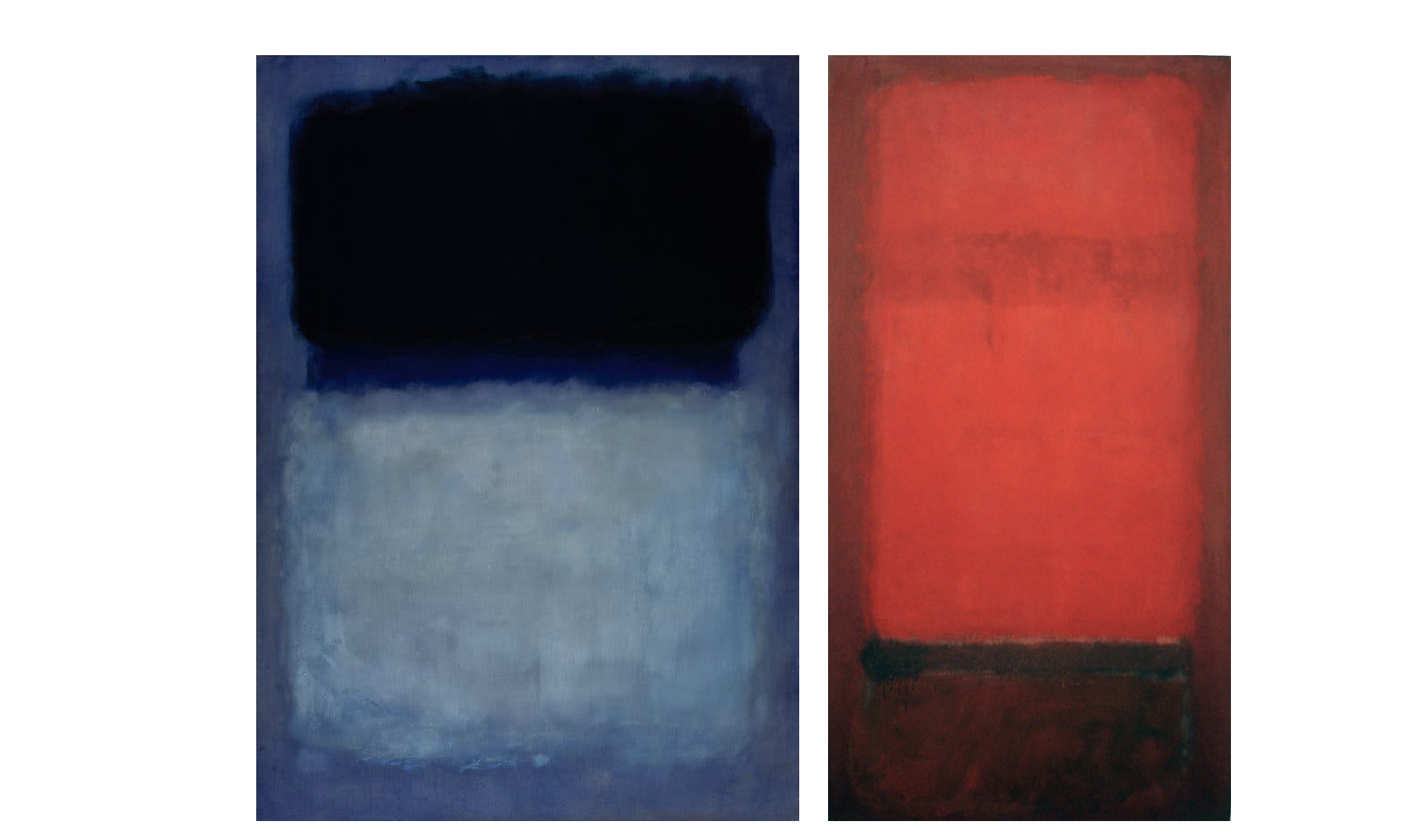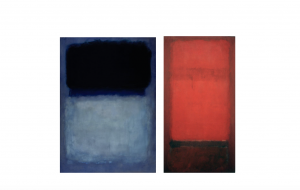
“Green on Blue” (1956) and “Light Red over Dark Red” (1955-57)
Sometimes you want to remember where you were when something important happens.
Yesterday, in the middle of my workshop at the Berlin Change Days, Bess comes in with the news of Biden’s victory. In the little screens in front of me arms go up in the air, we congratulate each other with abandon. Until one of the participants says: ‘We cannot assume that there are no GOP supporters here in our session. Let’s acknowledge and respect that’. This blog is about why and how that matters.
Back to yesterday. This is what I remember. My workshop is about the unknown. More specifically about our capacity to remain in a state of ‘not knowing,’ to extend our patience and defer drawing ‘what we perceive’ into the realm of ‘what we know.’ The assumption here is that the more we dwell in this in-between state, the more options unfold to help us make appropriate decisions.
We had set up a virtual museum with a selection of artworks by artists like Frida Kahlo, Rothko, Basquiat, Géricault and others. I ask participants to pick a painting of their choice and then think of a question they grapple with. People go into breakout sessions based on the painting they have chosen. Then I ask them to look at the painting again, with their question at the back of their minds, like an intention. To observe, notice carefully, openly. And share with the rest of the group what emerges. I am in a group that has selected Rothko. We agree that we will not share our question, only our fresh response to the painting.
The more we dwell in this in-between state, the more options unfold to help us make appropriate decisions
This is my personal response: ‘the blue rectangle stands out, it is a joyous element between the white and the black. It is somehow connected to the blue in the background. As if it is made up of the blue matter of its surroundings. The white is not entirely white, and the black is not entirely black, but it looks that way in the image. The white is bigger than the black, it weighs on the white’.
Then I stop. I tell the people in my group, it’s enough; there is so much meaning here that flows between me and the painting that I can’t take in much more.
I will not reveal the question here; it was a private one. But here’s the surprise. It is only this morning that I see the political overtones of the response to the Rothko’s blue: the segregation, the power balance and the hopeful blue rectangle.
And I am transported back to the moment when the news of the Democrats’ victory interrupted our session and one of the participants reminded us to respect the other side; the side that is dealing with defeat.
What does it mean to be the complete projection of all that is not?
Now, as I write, I am so grateful for Rothko’s powerful reds. I reflect on our deep empathy for all colors. What attracts us to blue, red? They are so different and yet they are recognized by all of us. My friend, Leslie Brisset asked me once: ‘What does it mean to be the complete projection of all that is not?’
The workshop was an exploration of the phenomenological idea of ‘bracketing’ developed by Husserl (1859–1938). Bracketing defined by Ladkin is: the phenomenological aspiration of ‘putting aside’ one’s preconceptions, expectations, or culturally determined interpretations in order to encounter the ‘essence’ of a phenomenon. (In Ladkin, D. (2005). ‘The enigma of subjectivity.’ Action Research.)
Inspired by this term and Leslie’s question, I feel the urge to extend the workshop somewhat to this blog. Observed closely, openly, what does Rothko’s Blue, what does Rothko’s red tell you about the challenges you face in the world today?

Contact joukekruijer@gmail.com and read about not knowin, liminality and artful practice in research and organizational change on http://www.joukekruijer.nl/